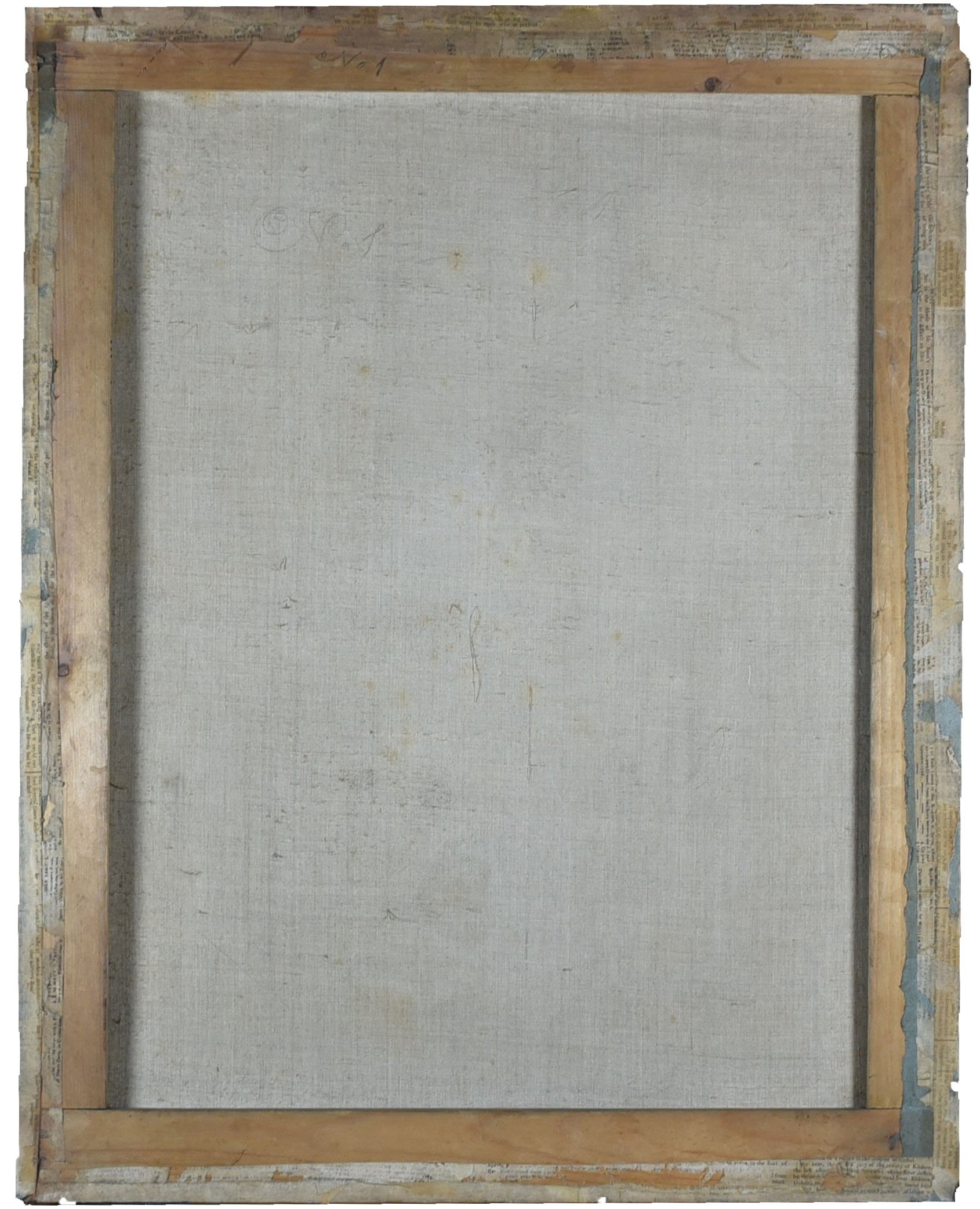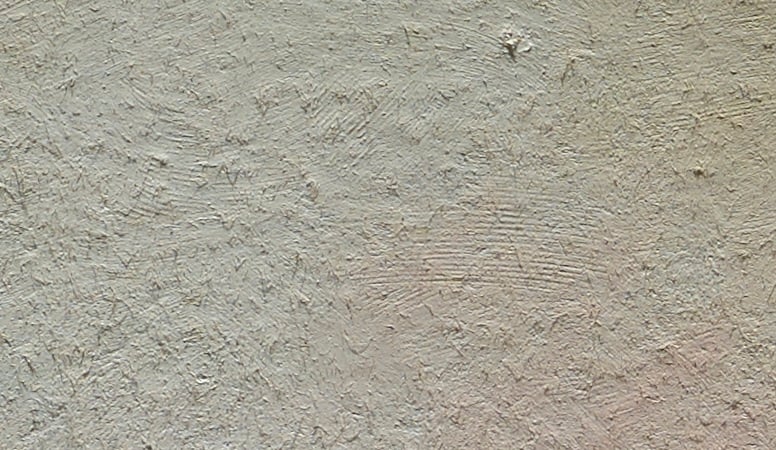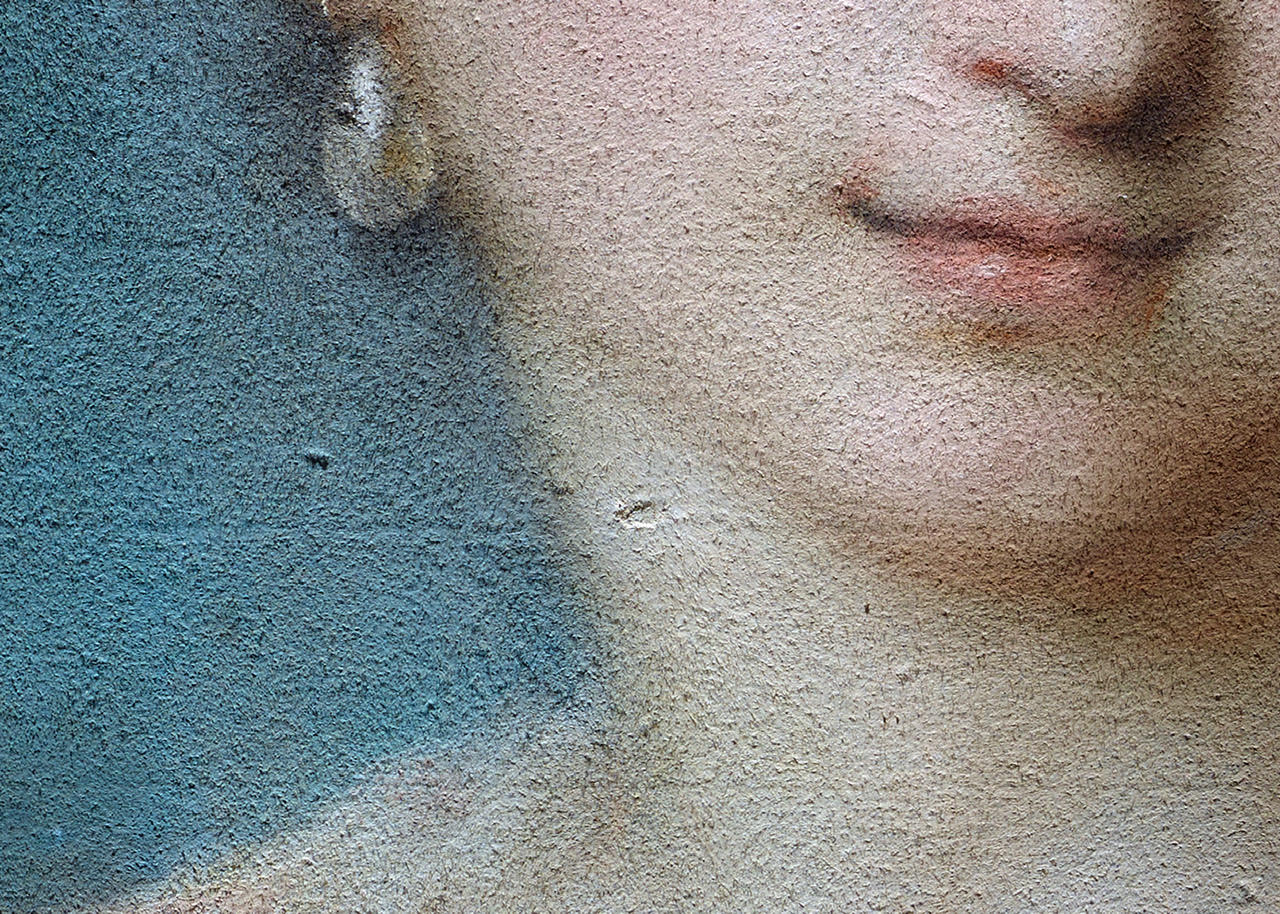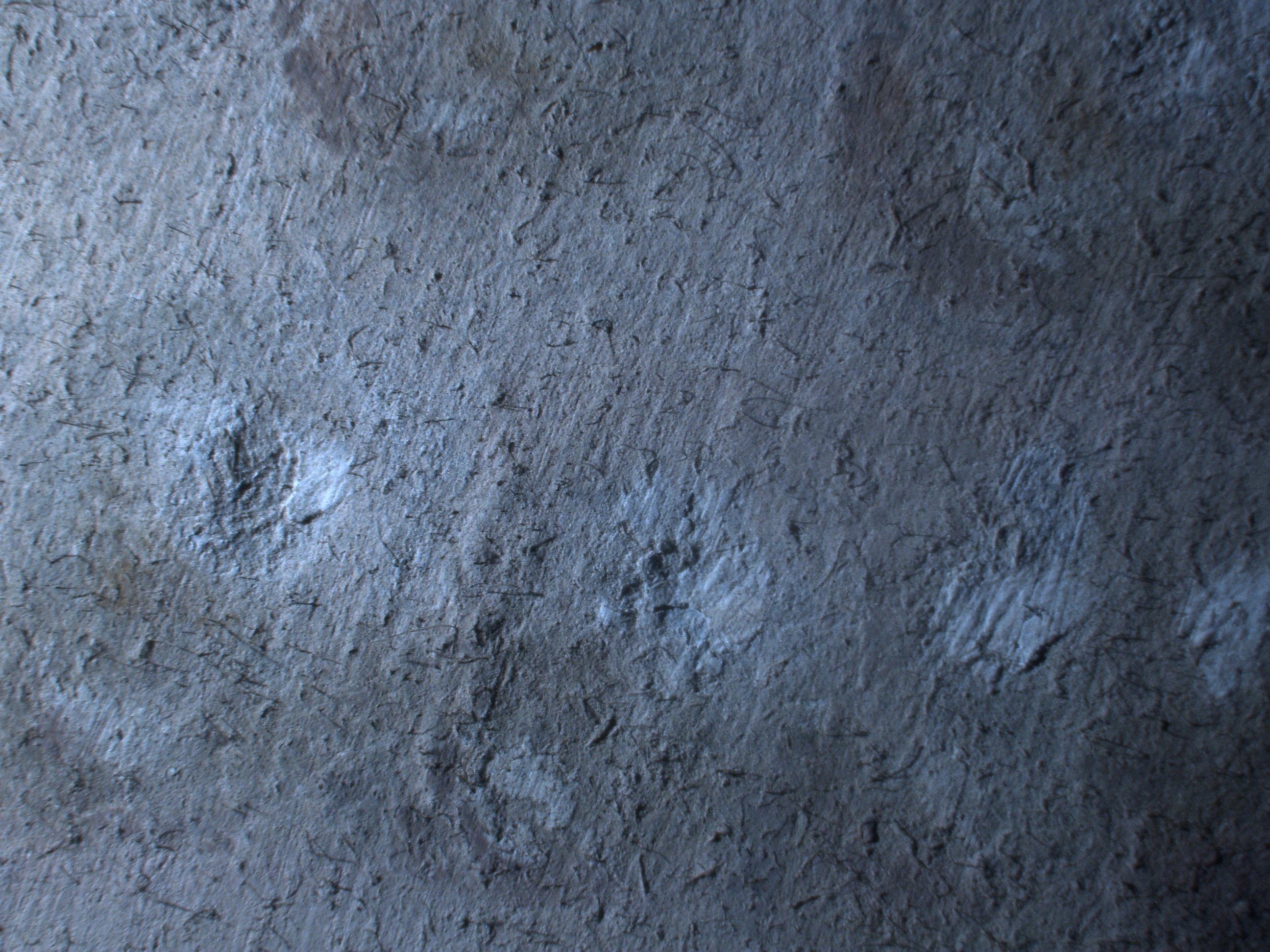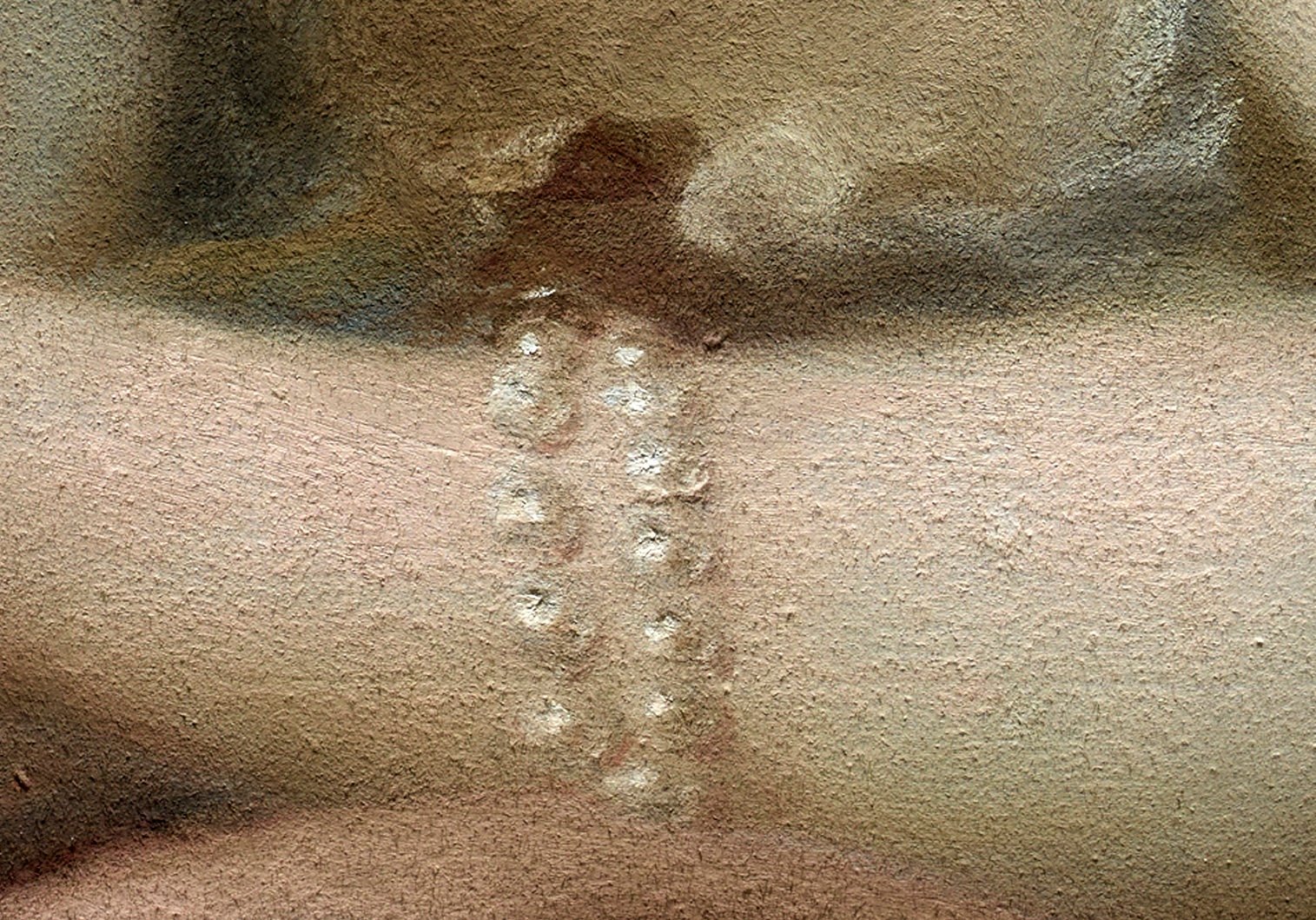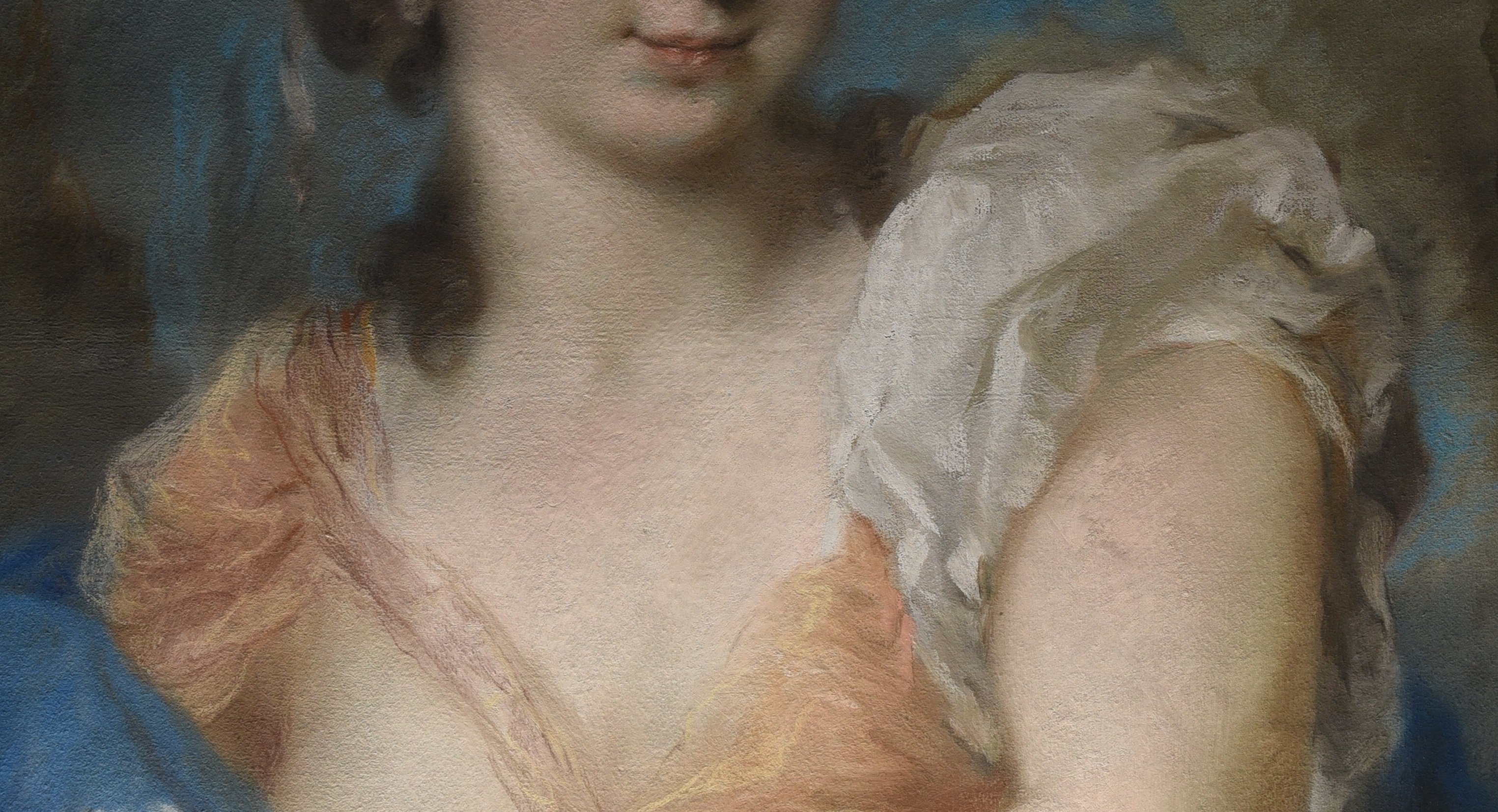
The Conservation of Rosalba Carriera’s Pastels of the Four Seasons
Learn about the conservation of a group of four pastel paintings by Rosalba Carriera
Working methods
Physical structure of pastel portraits
Although Rosalba Carriera bought her pastel sticks ready-made, she prepared her own paper surfaces as the ground for her pastel portraits. The structure was similar to that used for easel paintings. A sheet of blue paper was wrapped around a canvas, which was nailed to a wooden strainer (a square or rectangular frame made from wood). This created a very taut drawing support, ideal to draw on easily with the pastel sticks. The blue paper was only attached to the back of the canvas with adhesive, and small metal tacks were nailed into the edges.
As pastel paintings were smaller than oil paintings, they were portable and could be created relatively quickly, making them very popular among Grand Tourists visiting Venice who wanted a swift and easily transportable souvenir to take home.
The pastel painting technique
Carriera created a rich and realistic depiction of surfaces and textures by using a range of pastel hues and a combination of tools and techniques. She began by loosely drafting detailed areas such as fingers and flowers, probably using a black pastel stick or charcoal and chalks. She then filled in large areas before finally working the faces and flesh tones. Dry powdery pastel was used in the background, but the flesh tones were probably powdered pastel mixed with water, applied wet with a brush to block out areas of colour.
She blended or ‘sweetened’ layers of colour, contours and shading, and sometimes shaped certain areas using a finger or stump (a rolled piece of leather or paper). Carriera used this technique to create richer areas of detail. This method can be seen in this image of the lips within the pastel of The Personification of Winter. The use of a finger or stump leaves a smoother area below the lips and blends the line of the mouth into the surrounding skin.
Linear marks, referred to as striations, are visible in the bust area of The Personification of Spring. This suggests that ground pastel mixed with water was applied with a brush and then reworked with a modeller’s comb, possibly to blend the areas depicting skin, making them look smoother.
In this image of the white highlights of the pearls in the pastel of The Personification of Autumn, Carriera appears to have scraped away the top layer of pastel to reveal the white layers of pastel beneath, giving the pearls their iridescent shine. The pastel technique usually involves applying light colours first, and then using darker pastel sticks to create the shadowing. Pastellists often added finishing highlights by adding a touch of impasto to a glint of an eye, or a reflection on a metal surface. The highlights are white or light colours of pigment used to depict the brightest parts of an artwork to create shape and form.
In this case, however, Carriera decided to scrape out the superficial darker layers to bring out the sheen on the pearls in the bracelet. Scraping might have been an easier way of creating small, repetitive details on the pearls.
Layering of both wet and dry pastel also achieved the rich impasto areas seen in areas of flowers and foliage in the pastel of Spring. Carriera built up the petals and leaves in successive layers of colour, giving the shapes a rich fullness.
In The Personification of Summer, Carriera created the shadows on the right sleeve with light touches of soft, powdery green and pink pastels. She then created the white highlights by pressing a pasty white stick into the paper and blending the colour carefully with her finger or a stump. Finally, the dark outlines of the orange dress were drawn in using the sharp edge of a harder pastel stick.





